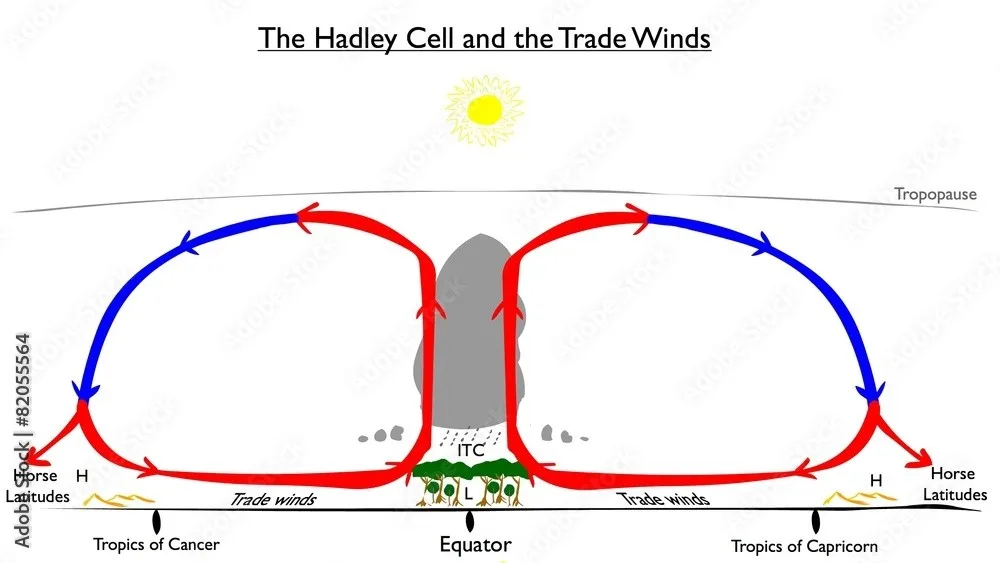Introduction Hadley cell
The Hadley cell is one of the key elements of the complex network of processes that make up the Earth’s climate system. The atmospheric circulation pattern, named after the 18th-century metrologist George Hadley, plays a crucial role in determining the weather and climate all over the world. we shall examine the inner workings of the Hadley cell in this post and consider how it affects the climate and weather on our planet.
The Hadley Cells foundations:
A vast atmospheric circulation loop that spans the tropics and redistributes heat and moisture is the Hadley cell’s fundamental component. the main parts of this atmospheric engine are as follows:
Equatorial Convection: The Hadley cell starts close to the equator when the earth’s surface is warmed by strong solar heating. warm moist air rises as a result of this heating resulting in low pressure area.
Aising Air: Warm air rising causes it to cool and condense, creating clouds and precipitation. the tropical rainforest and monsoon systems located close to the equator are driven by this phenomenon.
High altitude flow: The air continues to rise even after it crosses the tropopause which separates the troposphere from the stratosphere. it keeps moving poleward generating a wind flow at high height.
Subsidence and desert: The descending air from the high altitudes reaches the earth’s surface at about 30 degrees latitude north and south. Subtropical deserts like the Shara and the Atacama are created as a result of the warming and drying effects of this air that is subsiding.
Trade winds: Surface high-pressure zones are produced by falling air near subtropical highs. the trade winds, dependable surface winds used traditionally by sailors for trade and navigation, are driven by these zones.
Return flow; A portion of the air that is settling near the subtropical highs is returning in the direction of the equator, closing the circulation.
Climate and weather factors:
Because the Hadley cell affects many facets of our climate and weather., understanding it is essential:
tropical rainforests: The humid tropical rainforests found in places like the Amazon basin are the result of high rainfall brought on by rising equatorial air.
- Desert Formation: In subtropical places, descending air forms arid deserts, affecting the ecosystems and people communities there.
- Trade Winds and Navigation: In the past, marine trade routes and exploration relied heavily on the tradewinds.
- Climatic Zones: The tropics subtropics and trade wind regions are all included in the Hadley cell’s definition of the earth’s climatic zones.
Changes in the climate and variation
The Hadley cell offers a simplification of atmospheric circulation, although it is subject to a variety of influences, including climate change. researchers are examining how changes in the Hadley cells’ intensity and behavior due to global warming may alter precipitation patterns and climate.
Conclusion:
The Hadley cell is a key element of the earth’s atmospheric circulation systems influencing the climate and weather patterns on our planet. Understanding its workings and connections with other atmospheric cells is crucial to understanding the intricate dynamics of the climate system on our planet. We learn important things about how our world functions and how it might change as a result of environmental difficulties as we continue to investigate and analyze the Hadley cell.




